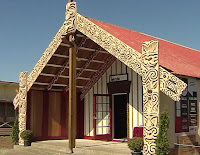Day Forty One
Colonisation 18,000km apart
When the Vikings came
to England in 9th century, it wasn’t all beer and skittles.
They were ruthless and vicious and the effects
on land, people and language are still felt today.
In many parts of Northern
England and Scotland, these invaders killed every man in the settlement.
Apart from the fact
that the men would certainly kill them given half the chance, they had another reason
for the slaughter.
These were not the
shock troops who made swift sorties to grab gold and run home again, these were
the colonisers.
They intended to stay,
take the enforced widows as wives and force their culture on the locals.
As many as 35, 000 Danish Vikings did just that as can be confirmed by archaeological finds and the research of many Viking specialists.
 |
| King Cnut (Canute) |
King Cnut didn't try to hold back the waves. He was trying to prove to his sycophantic courtiers that contrary to their assertions, he was not all-powerful.
Norse is still very
near at hand in the North of England. Place names such as Gunnarside and
Aysgarth are those given by the Vikings.
Words which came with the invaders include: barn, anger, cake, egg and flat.
Perhaps it was this knowledge and the enduring impact of that Scandinavian takeover nearly 1,000 years later which resonated when I came from Yorkshire to New Zealand and began learning about Maori culture.
 |
| Maori waka taua (warship) |
When I saw Maori waka,
I could hardly believe how like the Viking longships they were.
 |
| Viking longship |
The traditional stores houses of the Maori,
called pātaka are very much like old Norse store houses.
 |
| Pataka for storing food |
This is not really surprising as the basic elevated
design of both necessitated protection from rats and other opportunists.
Dwelling too were
alike and that seemed quite strange to me because homes are constructed
according to climate.
 |
| Ancient Norwegian painted house |
New Zealand and
Norway are not comparable.
 |
| This is a wharenui, Maori meeting house, not used for permanent residence but the design similarities are still remarkable. |
 |
| Maori kowhaiwhai pattern representing hammerhead sharks |
 |
| Norse decoration |
Of course they're not identical, each one bears its own deep cultural significance but the two countries are some 18,000 kilometres apart.
Is there any reason why they should have any similarities at all when traditional designs from places much nearer at hand, are totally different?

